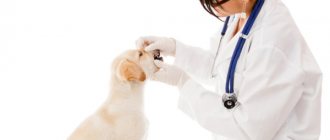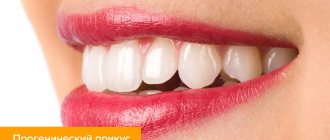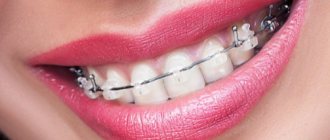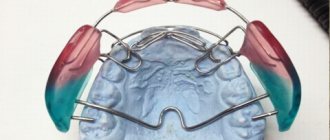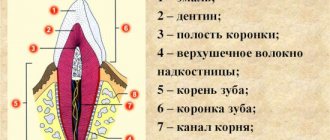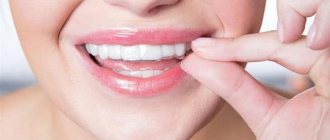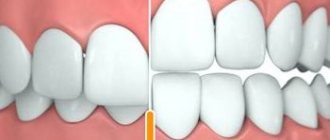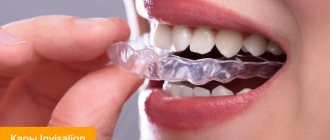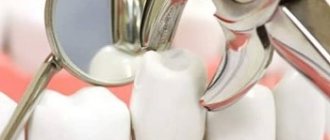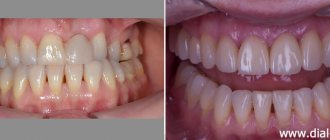The Bio-Vet network of veterinary clinics provides dental services to your dogs.
It must be remembered that oral care is also very important in animals. This is not only a well-groomed appearance, but also a guarantee of your dog’s health.
CLINIC REGISTRATION
HOME CALL
Currently, cats and dogs live in completely different conditions than their ancestors lived.
Nowadays, animals do not need to cut up their prey before eating it, which means their teeth are not cleaned. Dogs at home live longer, and the strength of their teeth is insufficient.
When should you take your dog to the dentist?
If you care about your pet’s oral hygiene and perform hygienic cleaning 1-2 times a week, then you can visit the dentist once every six months or a year.
If your animal constantly has an unpleasant odor from its mouth, then you should rush to the dentist.
If a dog has red gums, drooling, the animal refuses to eat, and the animal may ask to eat, sit at the bowl, but not eat, you should immediately show the animal to the dentist.
It is not uncommon for an animal to have one eye watery and swollen when an abscess matures in the mouth, and there is profuse drooling. In this case, it is also worth visiting a veterinary dentist.
A veterinarian-dentist not only removes tartar from dogs and cats, but also checks the condition of the teeth. For example, during an examination you may see exposure of the alveolar socket, which leads to tooth loss. To prevent tooth loss, the doctor may perform splinting. This is the installation of special dental bridges.
In our clinic, we grind teeth after ultrasonic cleaning and coat the teeth with a special agent to restore enamel. This prevents plaque formation for a longer period.
A veterinary dentist can also, if necessary, install a filling and even braces. The dentist removes milk teeth, which often do not fall out on their own in dogs, which leads to changes in the bite. The dentist diagnoses various neoplasms in the oral cavity.
Correction of bite in cats and dogs
Today, owners quite often turn to the veterinary clinic to correct the bite of their pets. The most common patients are dogs of dwarf breeds.
What is malocclusion? What are the types of malocclusion? How common is it in cats and dogs? Is malocclusion in dogs fundamentally different from malocclusion in cats?
A pathological bite is an incorrect relationship between the teeth of the upper and lower jaw. Such a pathology can be caused by an incorrect ratio of the length of the jaws (the lower jaw can be much longer than the upper jaw or severely underdeveloped) or the incorrect location of the teeth themselves on correctly developed jaws.
| Left - Overshot (progenia) as a result of a greatly elongated lower jaw in a Bichon dog. In the center - Underbite (prognathia) as a result of underdevelopment of the lower jaw in a Dachshund dog. Right - Displacement of the canines on the lower jaw to the center of the oral cavity (retroposition) in the Yorkshire Terrier. The lower and upper jaws are developed correctly. |
Let's look at the most common types of bites in dogs:
- A scissor bite (orthognathy) is normal in most dog breeds.
It is characterized by a tight closure of the upper and lower incisors in such a way that the tops of the lower incisors should rest against the base of the upper incisors. The fangs should be in a tight “lock”.
Scissor bite
- Overshot (progenia) is the norm for bulldog breeds of dogs.
- Underbite (prognathia) is not normal for any breed of dog.
- Pincers (direct bite). Allowed and considered normal for some dog breeds.
Rice. 5. Underbite in a Yorkshire Terrier. The photo clearly shows that the tops of the lower incisors do not rest against the base of the upper incisors. Rice. 6. Cane Corso has a straight bite. The tops of the incisors rest against each other, the fangs are located in a tight “lock”.
- An open bite (not closing the incisors) is not normal.
- Distortions (asymmetry). Not the norm.
Rice. 7. Skewed Tibetan Mastiff. The left branch of the lower jaw is pushed forward.
Malocclusion occurs predominantly in small and toy breeds of dogs. In large dogs, malocclusion is quite rare, but in cats it is practically never found.
A special feature of bite correction in cats is the ability to manipulate only the positions of the fangs. This is due to the fact that cats have very small incisors, so the possibility of applying orthodontic appliances to them is practically excluded.
On the left, the cat’s canine is shifted to the center of the upper jaw. On the right, an orthodontic structure was applied to the canine, which moved the canine to the correct position.
What are the consequences of living with a malocclusion? How serious can they be for a pet? An incorrect bite can have serious consequences for your pet. There are situations when a displaced canine leads to the formation of an oronosal fistula (a hole in the palate between the oral and nasal cavities) or to incomplete closure of the jaws, which, in turn, causes the formation of plaque and then tartar.
Rice. 9. Underbite and retroposition of the lower canines in a one-year-old bobtail dog. Tartar.
There are situations when the malocclusion is only a cosmetic defect, then there are no medical indications for its correction, and its correction is carried out only at the request of the owner.
How is a bite usually corrected? How long can treatment take? What does the doctor do and what should you do at home (if necessary)?
There are a huge number of methods for correcting bites, so in each specific case the choice depends on the conditions of the malocclusion itself and on the doctor’s knowledge of one or another technique for correcting the bite.
Conventionally, methods for correcting bites can be divided into two groups: orthodontic and surgical.
The orthodontic method of correction involves the use of a huge variety of different orthodontic devices, which is aimed at changing the position of the teeth. The surgical method is used to change the length of the jaws.
| Rice. 10. Options for orthodontic structures. | Rice. 11. Options for orthodontic structures. | Rice. 12 a. Vestiposition (disposition of the tooth crown towards the vestibule of the oral cavity) of the canines in a Pomeranian Spitz. Against this background, a change in the position of the extreme upper incisors occurred. | Rice. 12 b. Vestiposition (disposition of the tooth crown towards the vestibule of the oral cavity) of the canines in a Pomeranian Spitz. Against this background, a change in the position of the extreme upper incisors occurred. |
| Rice. 12th century Installation of orthodontic construction. | Rice. 12 g. Installation of orthodontic structure. | Rice. 12 days. 3 weeks after correction. | Rice. 12th. 3 weeks after correction. |
| Surgical method for correcting underbite in a Bichon dog. |
Surgical method for correcting the distortion of the lower jaw in the Tibetan mastiff.
The time spent correcting the bite usually ranges from several weeks to several months. This depends on many factors: the individual characteristics of the animal’s body, breed, initial bite, correction method. The doctor’s task is to select a technique that is most suitable not only for correcting some abstract bite, but also necessary for this particular animal, based on its physiological, anatomical and emotional characteristics.
In turn, the owner of the animal, after carrying out manipulations to correct the bite of his pet, is obliged to create conditions under which the risk of damage to the animal’s orthodontic structure would be minimized. Accordingly, it is necessary to isolate the animal from any load on the jaws: do not allow playing with other animals, various toys, gnawing on sticks, and exclude solid food from your pet’s diet. After each feeding, it is necessary to thoroughly clean the structure of food debris. In some cases, antibiotic therapy is performed.
How easy/hard is the pet to tolerate treatment? What might be bothering him and how can the owner help the pet?
All animals experience bite correction differently. But in most cases, signs of anxiety in patients are observed only in the first few days, then addiction sets in, therefore, if the animal is easily excitable, it is recommended to wear a postoperative collar for the first 2-3 days after installation of the structure in order to avoid self-injury by the patient. These first few days are the most crucial for the owner, who must especially carefully monitor his pet and note the peculiarities of its behavior.
Does it happen that to correct a bite you need to remove one or more teeth? Why is this being done?
There are situations when an animal, due to significant crowding of teeth, cannot achieve correct occlusion. In this case, there are several options for solving the problem: resort to surgical expansion of the jaw or simply remove one or more teeth. If the owner is inclined to decide to remove teeth, he must understand that this cannot be qualified as a bite correction, since bite correction involves measures aimed at restoring the functioning of the dental system and the correct position of the teeth.
Sometimes, to correct a malocclusion, it is necessary to place dental implants/extrusion of an impacted tooth. Impacted teeth are those that are located in the jaw after the period of their normal eruption, in which the formation of roots is completed.
Incisor retention in a Yorkshire Terrier before and after correction.
| Placement of an implant and tooth crown in place of the missing P4 for a Giant Schnauzer. |
Can a corrected bite become incorrect again? Why?
Relapse in orthodontics is the return of displaced teeth to their original position some time after the end of treatment and is possible when, for some reason, the period required for the displaced tooth to “grow” on the new site has been violated. Therefore, in order to avoid this situation, it is important to exclude any additional traumatic factors and prevent the inflammatory process. Also, to prevent relapse in orthodontics, retention devices are traditionally used - retainers, the task of which is to hold the teeth in the position achieved as a result of treatment.
Relapse is also possible in cases where the bite correction was carried out before the end of the animal’s growth. Then a correctly corrected bite can undergo significant changes, since the growth of the jaw bones occurs unevenly. In this regard, it is recommended to begin correcting the bite after growth has finished (for dwarf breeds - after 11 months, for large and giant breeds - after 14-15 months).
Are there situations when a malocclusion cannot be corrected?
Any malocclusion can be corrected! Sometimes, when it may involve several surgical interventions and then orthodontic corrections, it will take more time and effort, but any bite can be corrected.
An example of an interesting case from the practice of correcting malocclusion in an animal.
In our practice, there was the following incident: a dog of the Russian Greyhound breed had a bite correction, and an orthodontic structure was placed on the incisors. It just so happened that on December 31, in a fight with another dog while walking, she knocked out her upper incisor. The owners rushed to the clinic, but the doctor who performed the correction sent them to look for the lost tooth. The owners showed ingenuity: they collected all the snow that was in the area of the fight with a shovel, washed it in the bathroom at home and found the tooth.
On January 1, the happy owners arrived at the clinic with a found tooth, which was successfully reimplanted back into the animal. After several months, both the doctor and the owners were unable to determine with certainty which tooth was affected. These are the New Year miracles that happen. The miracle in this situation is not that the tooth grew in, but that it was found in the snow. Therefore, if for some reason your pet has lost a healthy tooth, and you managed to save it, put it in a saline solution and quickly head to the clinic. In the case where reimplantation is performed on the same day, the probability that the tooth will grow in is approximately 70%.
Can a pet with malocclusion participate in shows and exhibitions? How does malocclusion affect the show career of cats and dogs?
The bite must be assessed at exhibitions. In most cases, malocclusion is a reason for a reduction in the exhibition score or a disqualifying defect. Accordingly, the doctor performing bite correction is obliged to inform the owner that this problem is predominantly hereditary and can be passed on to offspring, with the rare exception when the bite has to be corrected after injuries (severe bruises, jaw fractures).
Conclusion
Veterinary orthodontics has come a long way in recent years. Today, correcting bites in animals is not a miracle, but an everyday practice. Choose an orthodontist who knows different methods of bite correction, and he will choose the most suitable one for your pet.
Prices for dental services for dogs
| Name of veterinary services | Unit | Price, rub |
| Tooth extraction: | ||
| Primary (incisors, premolars,) | 1 tooth | 200 |
| Dairy (canines, molars,) | 1 tooth | 450 |
| Permanent (incisors) | 1 tooth | 550 |
| Permanent (canines, premolars, molars) | 1 tooth | from 1100 |
| Trimming incisors in rodents | 1 animal | 300 |
| Ultrasound removal of tartar | 1 animal | from 1650 |
APPOINTMENT AT THE CLINIC
HOME CALL
The impact of malocclusion on health
Malocclusion has a negative impact on human health. We don’t think it’s worth talking about the aesthetic component. Of course, there are no life-threatening indicators, but it is still necessary to get rid of the anomaly, otherwise it will lead to disastrous consequences. First of all, the impact falls on the gastrointestinal tract. This happens due to the fact that a person’s chewing function is impaired. Correcting your bite with braces will help you avoid digestive problems. There are just some contraindications for installation:
- infectious diseases of the oral cavity;
- different sizes of teeth;
- allergies (occurs extremely rarely to metal, but in this case it is possible to install, for example, ceramic structures).
Consequences of lack of dental care
In the absence of care for the animal's oral cavity, unpleasant consequences appear after 2-3 years: weak gums, toothache, tooth loss, mineral deposits. To avoid such problems, it is worth visiting a veterinary dentist several times a year and performing ultrasonic teeth cleaning.
I would also like to note that when examining an animal’s oral cavity, other hidden diseases of your pet are often discovered. For example, in dogs it can indicate functional problems of the genitourinary system.
Our dentists also recommend not to neglect brushing your teeth at home. This should be done with a special brush and paste for dogs or cats. This should be done 1-2 times a week.
APPOINTMENT AT THE CLINIC
HOME CALL
